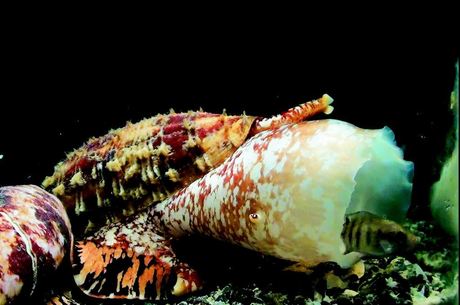Fast-acting insulin from snail venom

Australian and US scientists have found that peptide molecules from the venom of a marine cone snail, common to northern Australia, contain an insulin-like natural protein called Con-Ins G1 that can operate more rapidly than human insulin.
The findings build on earlier studies which reported that the marine cone snail Conus geographus used an insulin-based venom to trap its prey. Unsuspecting fish prey would swim into the invisible trap and immediately become immobilised in a state of hypoglycaemic shock induced by the venom.
Now, the researchers have used the Australian Synchrotron to create and analyse the 3D structure of this cone snail venom insulin protein. Their results have been published in the journal Nature Structural & Molecular Biology.
“We found that cone snail venom insulins avoid the structural changes that human insulins undergo in order to function — they are essentially primed and ready to bind to their receptors,” said Associate Professor Mike Lawrence from the Walter and Eliza Hall Institute, who added that human insulins could be considered ‘clunky’ by comparison.
“The structure of human insulins contain an extra ‘hinge’ component that has to open before any ‘molecular handshake’ or connection between insulin and receptor can take place,” he said.

What’s particularly exciting is the fact that Con-Ins G1 is able to bind to human insulin receptors. As explained by Dr Helena Safavi-Hemami from the University of Utah, Con-Ins G1 can ‘switch on’ human insulin cell signalling pathways, which could hold the key to developing ultrafast-acting insulins for more efficient diabetes management.
“Now we can look at the human insulin and see if we can make it more snail-like,” she said.
The team’s next step is to measure how quickly snail insulin, or a modified human insulin, would work when injected into an organism. Fish are affected almost instantly because the insulin passes over the gills. In humans, the process may take five minutes — though this would still be substantially faster than the 15–30 minutes required for the fastest-acting insulin currently available.
“It’s really about learning from nature,” concluded Danny Chou from the University of Utah.
Babies of stressed mothers likely to get their teeth earlier
Maternal stress during pregnancy can speed up the timing of teeth eruption, which may be an early...
Customised immune cells used to fight brain cancer
Researchers have developed CAR-T cells — ie, genetically modified immune cells manufactured...
Elevated blood protein levels predict mortality
Proteins that play key roles in the development of diseases such as cancer and inflammation may...





